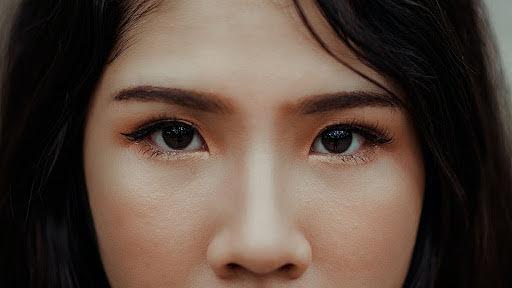|
With summer at its peak, many people are planning beach vacations. A beach vacation isn't complete without chic bikinis or swimsuits. Flaunting a bikini, however, requires a toned body and a perfectly waxed bikini line! The right wax adds a soft touch to our skin and allows us to flaunt our most fabulous bathing suit or bikini with élan. That said, even when it comes to waxing, things are more complex than they seem at face value. It is because there are hundreds of waxing techniques and styles, each with its own benefits, and drawbacks. This article will discuss one of the most popular summer waxing styles, Brazilian Wax, and how it originated. What is Brazilian Wax? Brazilian Wax is a style of hair waxing in which the entire pubic region is waxed, covering the front of the pubic bone all the way back to the anus. For those looking for a complete wax to remove all excess hair, this is an excellent choice for getting rid of all excess hair in your private areas. Not all Brazilian Wax treatments are entirely the same; there are several variations and options you can choose from. The most common thing that people choose to do is to leave a narrow strip of hair at the front of their pubic region or even more, depending on their personal preference. The History of Brazilian Wax Many of you might be surprised to learn that Brazilian Wax has quite an intriguing story surrounding its creation. This waxing procedure has a long history and gradually melded into pop culture to become a standard waxing procedure. Now let’s understand how the Brazilian Wax came to be and why it is called ‘Brazilian.’ Pre-1900s Sugar & Lemon Wax The history of Brazilian waxing can be traced back centuries to Egyptian, Roman, Greek, and other nearby regions where women used to wax their private parts. Back then, instead of using waxing strips, women used sugar and lemon for waxing because they thought that natural ingredients were more hygienic, safe, and practical. Surprisingly, while the practice of using sugar and lemon may not be as popular as before, this practice is still prevalent today and is known as sugaring. In this process, water, lemon juice, and sugar are combined to make an easy-to-use paste that removes hair without causing too much pain. Global Recognition & Bikini Fashion
Sugaring was the norm until the mid-1900s, but as bikinis became narrower, waxing methods also started to evolve. Specifically, around the late 70s, Rio De Janeiro and its beaches in Brazil saw an influx of visitors and women eager to show off their modern thongs-style bikinis. Brazilian wax enabled them to wander freely without revealing a strand of pubic hair. Brazilian Wax guaranteed that there would be no hair anywhere near your bikini line. As a result, this waxing method grew in popularity not only in Brazil but also worldwide. American Entry & How Brazilian Wax Got its Name Seven Brazilian sisters had set up a waxing salon in Manhattan, New York, bringing the waxing style to America. Known as the J Sisters, they popularized this waxing technique across the USA, and because of their ethnic background, the technique became known as Brazilian Wax. Over time, their salon began to attract celebrity customers and inspired further copies of the style. Brazilian waxing is still a popular waxing style that is ideal for the summer bikini season. With time, Brazilian wax has also evolved, and now people can opt for various types of Brazilian waxes such as Hollywood Wax and French Wax. How is Brazilian Wax Different From a Bikini Line Wax? A Brazilian Wax is a complete waxing of the pubic region from front to back, but what makes it different from a full bikini wax or line wax? Even though they are quite similar, it is important to note that Brazilian Wax removes more hair than any other type of bikini wax. That’s because Bikini Wax only removes the hair around the pubic bone, which is usually enough to give you a hair-free bikini look. The Brazilian Wax goes all the way around and removes hair from all parts of the genital area so that it leaves the area hairless. Is Brazilian Wax Right for You? Now that you know how the Brazilian Wax originated, you must be wondering if it is right for you? Well, that depends on your skin type and what you plan on achieving from your waxing session. Brazilian Wax, however, has several advantages:
If you are someone looking to go out on beaches and travel throughout the next few weeks, a Brazilian Wax can make life more relaxed. On the other hand, if you don’t have any plans and want to avoid unnecessary waxing and pain, you can stick to simple waxing instead. Also, for those interested in experiencing the true origins of Brazilian Waxing, you can always try out sugaring. For more tips and tricks to help you make your health and fashion decisions perfect, visit Glaminator Beauty Bar or book one of our makeup services today! If you are a fan of aromatherapy or scented candles, I am sure you must have come across lavender-scented candles and found yourself swayed by their fragrance. Did you know that this fragrant lavender oil used in aromatherapy or candles can also be highly beneficial in your skincare routine? Let’s find out how!
But before we move on, here's a brief explanation about lavender oil: Lavender oil is an essential oil extracted from dried lavender flowers (Lavandula angustifolia) through steam distillation. It takes around 116 plants to make one pound of lavender oil. Let's now talk about the benefits of using lavender oil in skincare routine! Lavender oil might be a potent extract from the flower, but it has a history of being the mildest essential oil, making it suitable for most skin types. Lavender oil has skin healing properties A 2016 study demonstrated the ability of lavender oil to promote the healing of skin tissues. This is the first scientific research to support the claims made about lavender oil by alternative medicine for many years. Lavender oil may speed up the healing of areas impacted by cuts, burns, wounds, and scrapes. It may also help with subsiding the effects of bug bites. Lavender oil has anti-aging benefits Lavender oil can promote skin healing by boosting collagen. Collagen is one of the most important compounds that give your face a youthful, bouncy appearance. With age, your skin loses its ability to produce collagen naturally, resulting in sagging skin, fine lines, and wrinkles. Therefore, lavender oil can help keep your skin looking younger than ever. Lavender oil has anti-inflammatory properties Lavender oil is full of anti-inflammatory compounds that are antibacterial in nature. This makes it an excellent ingredient to prevent and treat acne or even general inflammation caused by bites or wounds. These also help curb further infections by acne-causing bacteria. Lavender oil unclogs pores, reducing the skin's oiliness and encouraging the healing of acne marks and scars due to its collagen-boosting abilities. Lavender oil has moisturizing properties Like most oils, lavender oil can lock in moisture and soothe dry skin. With its antibacterial and antifungal properties, lavender oil is perfect for treating eczema. Facial oils infused with lavender can alleviate inflammation and keep your skin hydrated and nourished. Lavender oil protects against skin damage Burning sun and pollution can cause premature aging and tanning of the skin. The antioxidants in lavender oil combat free radicals that speed up the aging process and also protect the skin from UVA and UVB damage. While not as effective as SPF in preventing sun damage, lavender oil can be a good recovery option rather than a preventative one. Lavender oil, like most essential oils, can be a bit too potent for the skin and hence, must be used with carrier oils to prevent sensitizing the skin. Regardless, its endless benefits make it one of the most multipurpose products to add to your skincare. Keep reading such insightful blogs at Glaminator Beauty Bar, and reach out to us for all your beauty needs today! |
Archives
June 2024
Categories
All
|


 RSS Feed
RSS Feed
